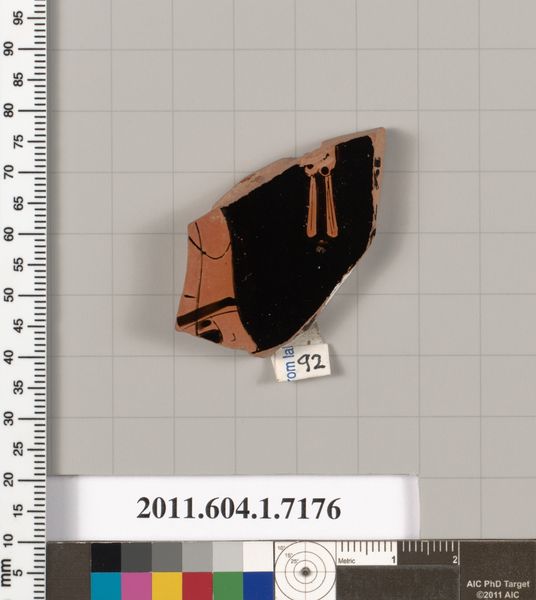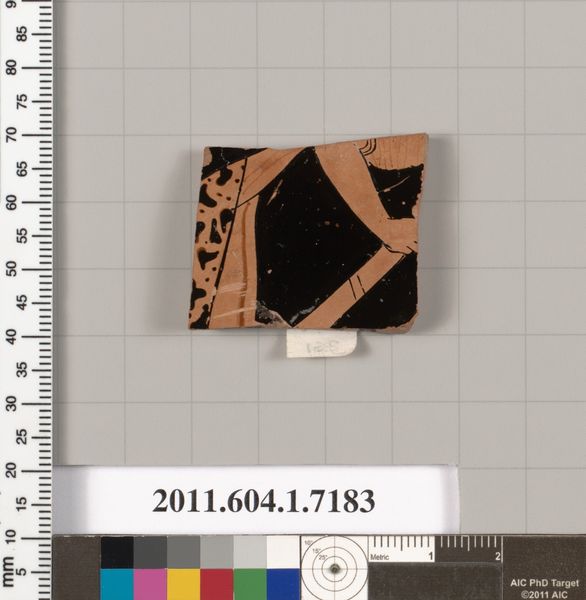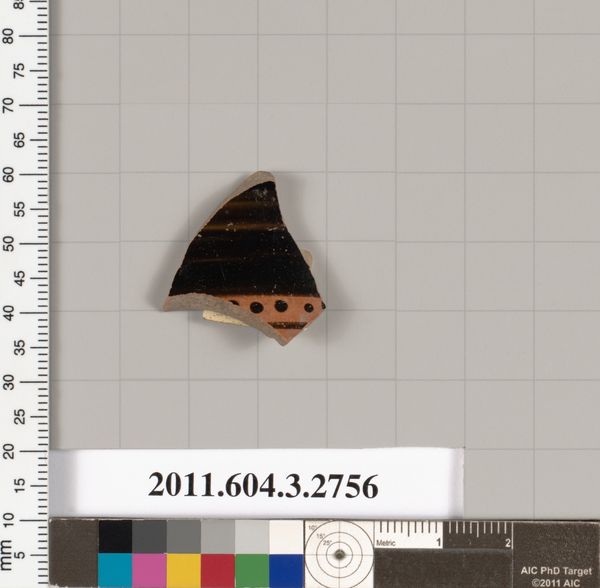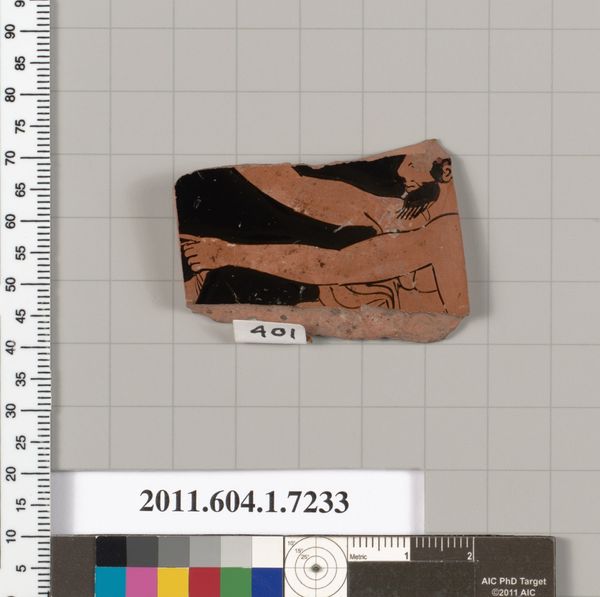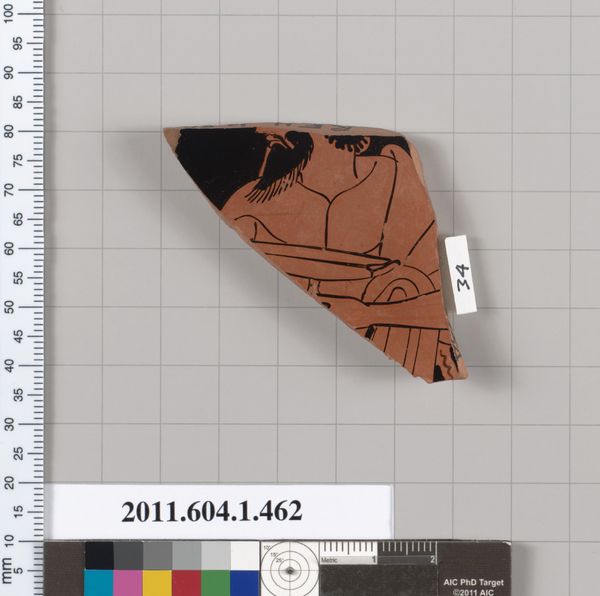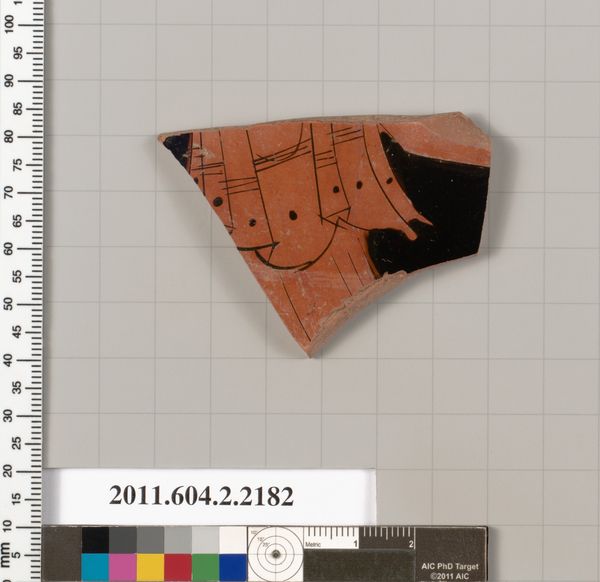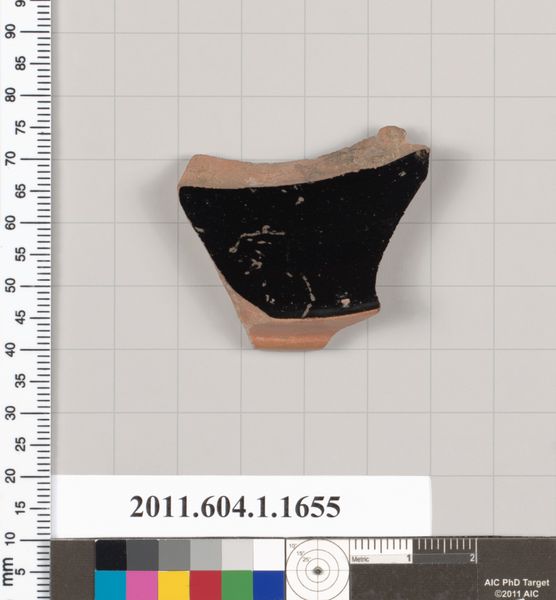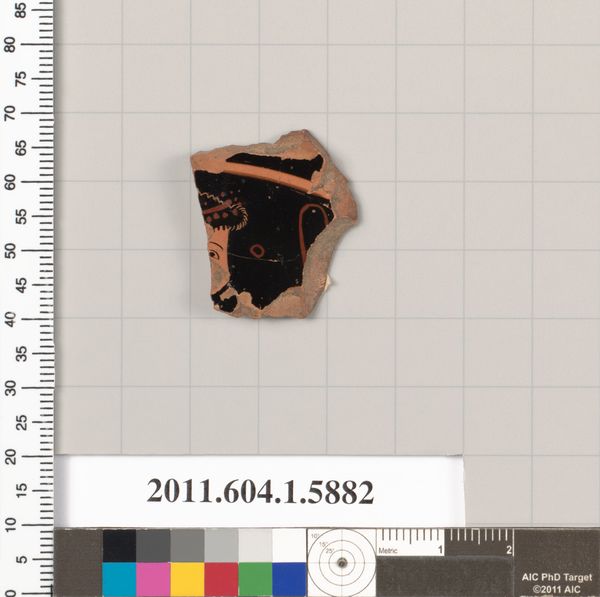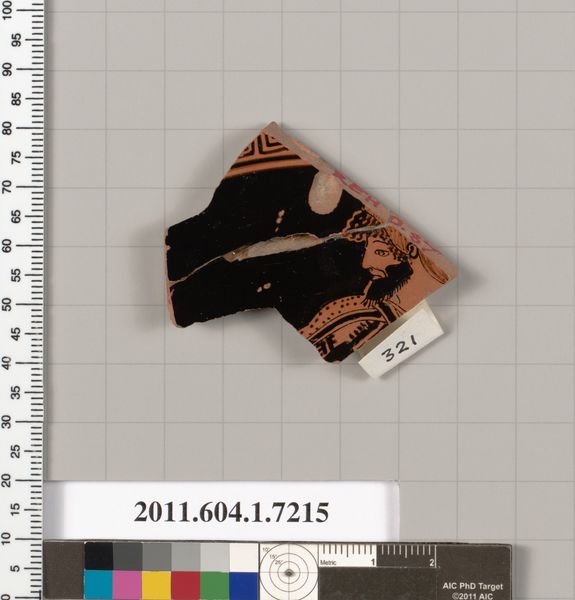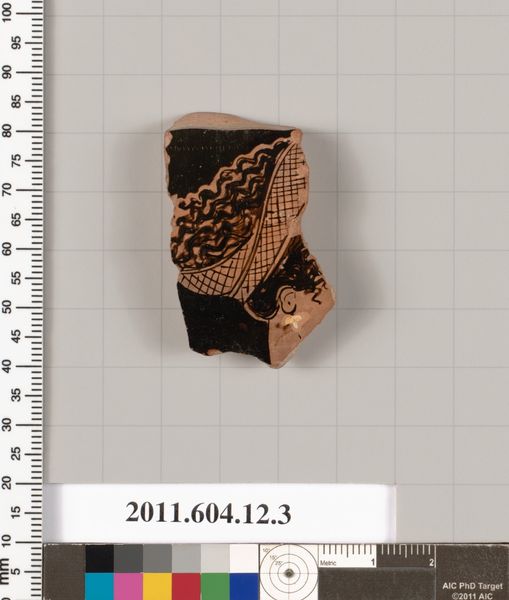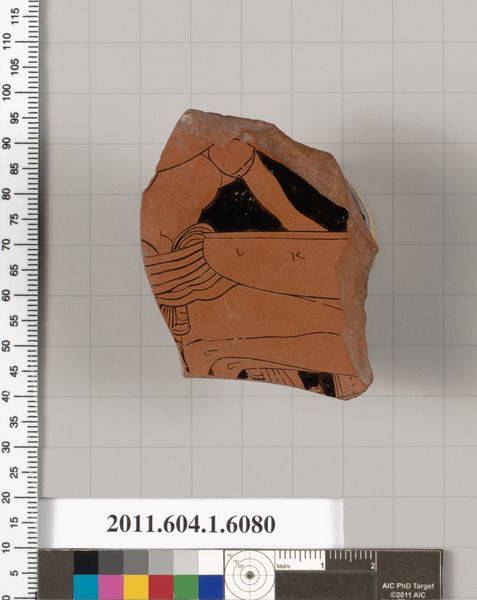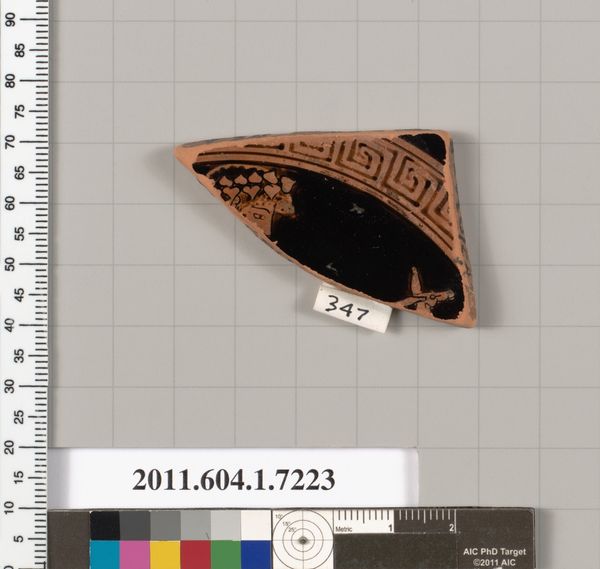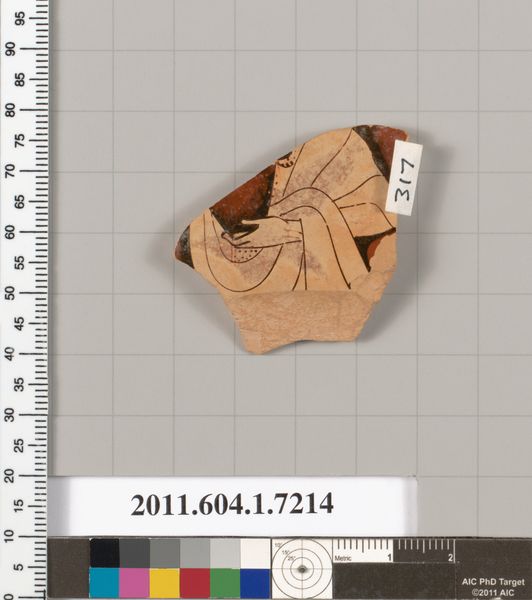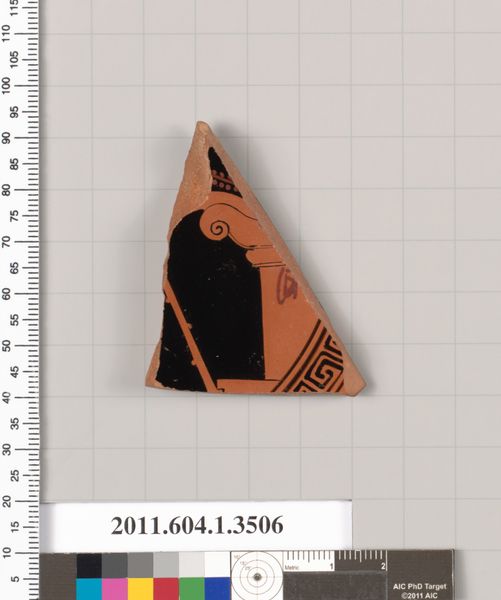
ceramic
greek-and-roman-art
ceramic
vase
figuration
roman-art
geometric
ancient-mediterranean
line
Copyright: Public Domain
Curator: We're looking at a terracotta fragment of a kylix, a drinking cup, dating back to 500 BC. The artist associated with this piece is believed to be Oltos. Editor: Even as just a fragment, there's a surprising sense of depth to it, a striking visual weight. It feels far grander than its actual size might suggest. Curator: Indeed. The red-figure technique, although only a section remains, emphasizes form through contrasting colors. Notice the precise, fluid lines. What thoughts do you have about how that process dictated style? Editor: Absolutely, the means of production profoundly shaped the aesthetic. Consider the firing process, the skill required to achieve these striking contrasts in pigment using the potter's wheel and careful kiln management. It speaks volumes about the socio-economic investment in ceramics at the time. Curator: It's a clear example of the human figure abstracted through stylized lines, contained by that elegant curvature, almost like a study in pure, controlled form. Do the remaining curved shapes have semiotic impact for you? Editor: Definitely, the curve dictates everything, but that reliance on curved lines also ties it deeply to the materiality. The piece is defined by its function as a drinking cup—an everyday object for a culture we might think is grand or even unknowable. And that production was certainly shaped by the market of social users, how these vases, and what they portrayed, were being consumed. Curator: It is, at its core, a geometric composition. An interesting juxtaposition of geometric design and potential narratives. It's a powerful example of how lines can denote three-dimensional forms and spaces on a curved object. Editor: The fragment makes me think about labor distribution in the ancient workshops. Who prepped the clay, who designed and painted these vessels, and for whom? Each piece reveals a complex chain of making and consumption, embedding social significance directly into the materials. Curator: Considering the surviving form and striking design, I find myself imagining the stories that this vessel, whole and intact, would have told us. The pure elegance of the piece really strikes me. Editor: Ultimately, even in fragments, this ceramic speaks volumes, highlighting connections among object, creator, and consumer. It is a reminder that even the most elegant object begins with mundane materials.
Comments
No comments
Be the first to comment and join the conversation on the ultimate creative platform.
